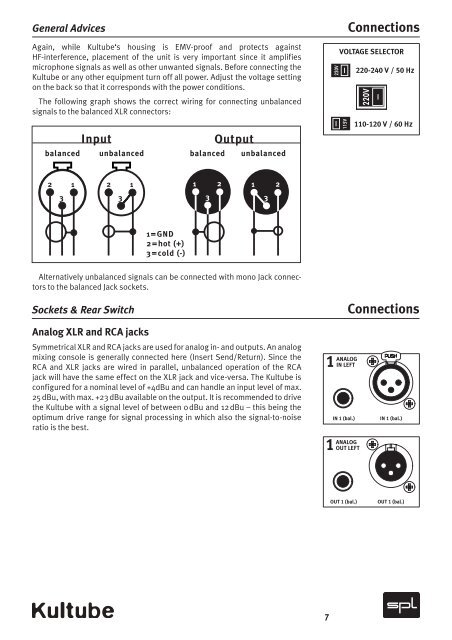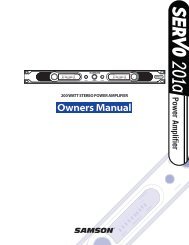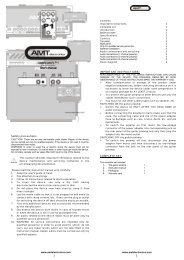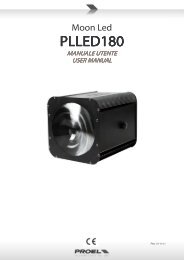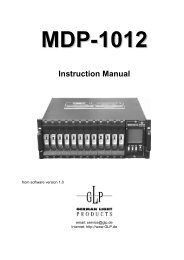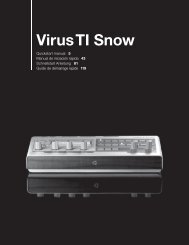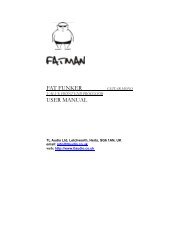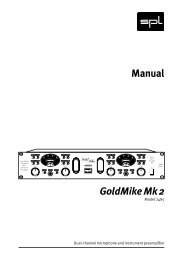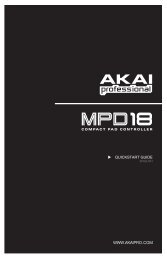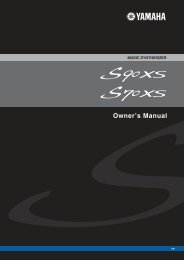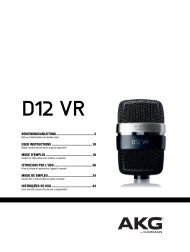Kultube
Kultube
Kultube
Create successful ePaper yourself
Turn your PDF publications into a flip-book with our unique Google optimized e-Paper software.
General Advices<br />
Connections<br />
Again, while <strong>Kultube</strong>‘s housing is EMV-proof and protects against<br />
HF-interference, placement of the unit is very important since it amplifies<br />
microphone signals as well as other unwanted signals. Before connecting the<br />
<strong>Kultube</strong> or any other equipment turn off all power. Adjust the voltage setting<br />
on the back so that it corresponds with the power conditions.<br />
The following graph shows the correct wiring for connecting unbalanced<br />
signals to the balanced XLR connectors:<br />
Input<br />
Output<br />
balanced unbalanced balanced unbalanced<br />
2<br />
1<br />
2<br />
1<br />
1 2<br />
1 2<br />
3<br />
3<br />
3<br />
3<br />
1=GND<br />
2=hot (+)<br />
3=cold (-)<br />
Alternatively unbalanced signals can be connected with mono Jack connectors<br />
to the balanced Jack sockets.<br />
Sockets & Rear Switch<br />
Connections<br />
Analog XLR and RCA jacks<br />
Symmetrical XLR and RCA jacks are used for analog in- and outputs. An analog<br />
mixing console is generally connected here (Insert Send/Return). Since the<br />
RCA and XLR jacks are wired in parallel, unbalanced operation of the RCA<br />
jack will have the same effect on the XLR jack and vice-versa. The <strong>Kultube</strong> is<br />
configured for a nominal level of +4dBu and can handle an input level of max.<br />
25 dBu, with max. +23 dBu available on the output. It is recommended to drive<br />
the <strong>Kultube</strong> with a signal level of between 0 dBu and 12 dBu – this being the<br />
optimum drive range for signal processing in which also the signal-to-noise<br />
ratio is the best.<br />
7


